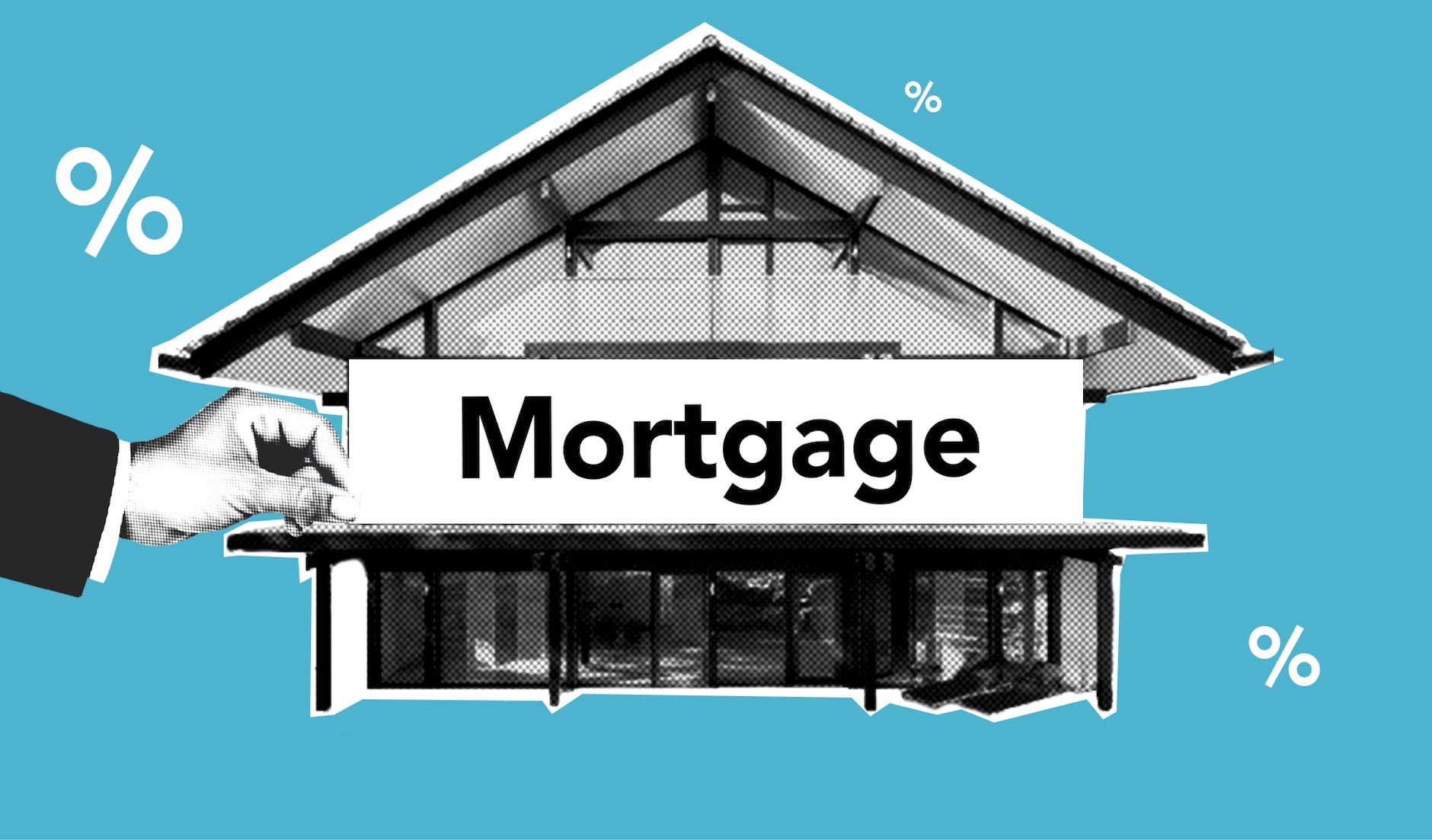Conventional Home Loan: A Comprehensive Guide
***freeDIGIBOOK***NACA Loan Program: A Comprehensive Guide to Affordable Homeownership
Chapter 1: Introduction
Definition of conventional home loan
Types of conventional home loans
Advantages and disadvantages of conventional home loans
A conventional home loan is a type of mortgage loan that is not backed by the government. Instead, conventional loans are provided by private lenders and banks. Conventional home loans are a popular choice for homebuyers because they offer a range of options and flexibility.
There are two main types of conventional home loans:
Fixed-rate mortgages, where the interest rate remains the same throughout the life of the loan.
Adjustable-rate mortgages, where the interest rate can fluctuate over time.
Advantages of conventional home loans include:
More options for loan terms and repayment schedules
Lower upfront costs compared to government-backed loans
No mortgage insurance requirement for borrowers with a down payment of at least 20%
Disadvantages of conventional home loans include:
Stricter qualification requirements compared to government-backed loans
Higher interest rates for borrowers with lower credit scores or smaller down payments
No flexibility with mortgage insurance requirements, unlike government-backed loans that may offer more options for borrowers.
Overall, conventional home loans can be a great option for qualified homebuyers who are looking for a loan with a range of options and flexibility.
Chapter 2: Qualifying for a Conventional Home Loan
Credit score requirements
Debt-to-income ratio
Employment history
Down payment requirements
Closing costs
Qualifying for a conventional home loan can be a rigorous process, but it is essential to ensure that borrowers can afford the loan and make their payments on time. Here are some of the key factors that lenders consider when evaluating borrowers for a conventional home loan:
Credit score requirements: A good credit score is essential to qualify for a conventional home loan. Most lenders require a credit score of at least 620, but borrowers with higher credit scores can receive better interest rates and loan terms. Lenders will also review credit history, including payment history, outstanding debts, and credit utilization.
Debt-to-income ratio: The debt-to-income ratio (DTI) is the percentage of a borrower’s monthly income that goes towards paying debts. Lenders typically require a DTI of 43% or less, meaning that the borrower’s monthly debt payments cannot exceed 43% of their monthly income.
Employment history: Lenders want to see that borrowers have a stable employment history and consistent income. They may require proof of employment and income, such as recent pay stubs, W-2 forms, and tax returns.
Down payment requirements: Conventional home loans typically require a down payment of at least 3% to 20% of the home’s purchase price, depending on the borrower’s credit score and other factors. Borrowers with a down payment of less than 20% may also need to pay for private mortgage insurance (PMI) to protect the lender in case of default.
Closing costs: Closing costs are the fees associated with finalizing a home loan, including appraisal fees, title search fees, and attorney fees. Closing costs can range from 2% to 5% of the home’s purchase price, so borrowers should be prepared to pay these fees out of pocket or negotiate with the seller to cover some or all of the costs.
Overall, meeting these qualifications can help borrowers secure a conventional home loan with favorable interest rates and terms.
Chapter 3: Applying for a Conventional Home Loan
Pre-approval process
Documentation required
Finding a lender
Loan application process
Once borrowers have determined that they meet the qualifications for a conventional home loan, the next step is to apply for the loan. Here are the key steps in the application process:
Pre-approval process: Before starting the home search process, borrowers can get pre-approved for a loan. Pre-approval involves submitting an application to a lender, who will review the borrower’s credit history, income, and other financial information. Based on this review, the lender will provide a pre-approval letter indicating the maximum amount that the borrower can borrow. This pre-approval letter can help borrowers when they make an offer on a home.
Documentation required: To apply for a conventional home loan, borrowers will need to provide a range of documentation, including:
Proof of income, such as recent pay stubs, W-2 forms, and tax returns.
Bank statements and investment account statements.
Identification documents, such as a driver’s license or passport.
Employment verification, such as a letter from an employer or proof of self-employment.
Information about other debts and liabilities.
Finding a lender: Borrowers can apply for a conventional home loan through banks, credit unions, or other private lenders. It’s important to research lenders and compare their interest rates, loan terms, and fees. Borrowers can also work with a mortgage broker who can help them find a lender that meets their needs.
Loan application process: The loan application process involves filling out an application form and submitting the required documentation. The lender will review the application and documentation and may request additional information or documentation. The lender will also order an appraisal to determine the value of the property. Once the lender approves the loan, the borrower will need to sign the loan documents and pay the closing costs.
Overall, applying for a conventional home loan requires organization and attention to detail.
Chapter 4: Understanding Interest Rates and Terms
Fixed-rate vs. adjustable-rate mortgages
Interest rate factors
Loan term options
Fixed-rate vs. Adjustable-rate Mortgages:
A fixed-rate mortgage is a type of mortgage in which the interest rate remains the same throughout the life of the loan. This means that your monthly mortgage payment will also remain the same, making it easier to budget for your monthly housing costs. Fixed-rate mortgages are generally available in 15-year and 30-year terms.
In contrast, an adjustable-rate mortgage (ARM) is a type of mortgage in which the interest rate can fluctuate over time based on market conditions. This means that your monthly mortgage payment can also vary, making it harder to budget for your monthly housing costs. ARMs typically offer lower initial interest rates than fixed-rate mortgages, but the interest rate can rise significantly over time, leading to higher monthly payments.
Interest Rate Factors:
Several factors can influence the interest rate you receive on a conventional home loan. These include your credit score, the loan amount, the loan-to-value (LTV) ratio, the loan term, and the type of loan.
A higher credit score generally results in a lower interest rate, as it indicates that you are a lower credit risk. A larger loan amount may result in a higher interest rate, as the lender is taking on a higher level of risk. A higher LTV ratio, which is the ratio of the loan amount to the appraised value of the property, may also result in a higher interest rate, as the lender is taking on a higher level of risk. A shorter loan term may result in a lower interest rate, as the lender is taking on less risk by loaning money for a shorter period of time. Finally, the type of loan, such as a fixed-rate or adjustable-rate mortgage, can also influence the interest rate.
Loan Term Options:
Conventional home loans are generally available in 15-year and 30-year terms, although other term options may be available. A 15-year loan term typically results in a higher monthly payment but a lower overall cost of the loan, as you are paying off the loan more quickly and paying less interest over time. In contrast, a 30-year loan term typically results in a lower monthly payment but a higher overall cost of the loan, as you are paying off the loan more slowly and paying more interest over time.
Other term options may be available, such as a 20-year or 25-year loan term. These options may offer a balance between a lower monthly payment and a lower overall cost of the loan. It is important to consider the pros and cons of each loan term option and choose the one that best fits your financial situation and long-term goals.
Chapter 5: Repaying Your Conventional Home Loan
Monthly mortgage payments
Amortization schedule
Making extra payments
Paying off your loan early
Monthly Mortgage Payments:
When you take out a conventional home loan, you agree to make monthly mortgage payments to the lender. These payments include both principal, which is the amount you borrowed, and interest, which is the cost of borrowing the money. Your monthly payment may also include additional costs, such as property taxes and homeowners insurance, which are typically paid into an escrow account.
Amortization Schedule:
An amortization schedule is a table that shows how each of your mortgage payments is applied to principal and interest over the life of the loan. In the early years of the loan, most of your payment goes toward interest, with only a small amount applied to principal. As the loan progresses, more of your payment is applied to principal and less to interest.
Making Extra Payments:
You can make extra payments on your mortgage to pay down the principal faster, which can save you money in interest over the life of the loan. Some lenders may charge a prepayment penalty for making extra payments or paying off the loan early, so it is important to check with your lender before making extra payments.
Paying off Your Loan Early:
Paying off your loan early can save you money in interest and free up cash flow for other expenses. There are several ways to pay off your loan early, including making extra payments, refinancing to a shorter loan term, or making a lump sum payment. However, it is important to check with your lender before paying off the loan early, as some lenders may charge a prepayment penalty.
When considering paying off your loan early, it is important to weigh the benefits against any potential costs, such as prepayment penalties or lost investment opportunities. Additionally, if you have other high-interest debt, such as credit card debt, it may be more beneficial to pay off that debt first before focusing on paying off your mortgage early.
Chapter 6: Understanding Mortgage Insurance
Private mortgage insurance (PMI)
Lender-paid mortgage insurance (LPMI)
Borrower-paid mortgage insurance (BPMI)
How to cancel mortgage insurance
Private Mortgage Insurance (PMI):
Private Mortgage Insurance (PMI) is insurance that is typically required for conventional home loans when the down payment is less than 20% of the home’s purchase price. PMI protects the lender in case the borrower defaults on the loan.
Lender-Paid Mortgage Insurance (LPMI):
Lender-Paid Mortgage Insurance (LPMI) is a type of PMI in which the lender pays the PMI premium on behalf of the borrower. The cost of the premium is typically built into the interest rate or loan amount, resulting in a slightly higher monthly payment.
Borrower-Paid Mortgage Insurance (BPMI):
Borrower-Paid Mortgage Insurance (BPMI) is a type of PMI in which the borrower pays the PMI premium directly to the insurer. The cost of the premium is typically added to the monthly mortgage payment.
How to Cancel Mortgage Insurance:
For loans with PMI, there are several ways to cancel the insurance. If you have a conventional loan and have made enough payments to have reached 20% equity in your home, you can request to have the PMI canceled. Your lender is required to automatically cancel the PMI once you have reached 22% equity in your home. If you have an FHA loan, you will need to refinance to a conventional loan in order to cancel the mortgage insurance.
It is important to note that canceling PMI may require an appraisal to determine the current value of your home. Additionally, if you have a good payment history and a strong credit score, you may be able to negotiate with your lender to have the PMI canceled earlier than the required threshold.
Chapter 7: Refinancing Your Conventional Home Loan
Reasons to refinance
Refinancing process
Benefits and drawbacks of refinancing
Reasons to Refinance:
There are several reasons why you may want to refinance your conventional home loan, including:
Lowering your interest rate: Refinancing to a lower interest rate can save you money on interest over the life of the loan.
Changing your loan term: Refinancing to a shorter loan term can help you pay off your mortgage faster, while refinancing to a longer term can lower your monthly payment.
Switching from an adjustable-rate to a fixed-rate mortgage: Refinancing from an adjustable-rate mortgage to a fixed-rate mortgage can provide stability and predictability in your monthly payments.
Tapping into your home equity: Refinancing can allow you to access the equity in your home, which you can use for home improvements, debt consolidation, or other expenses.
Refinancing Process:
The refinancing process for a conventional home loan is similar to the process of obtaining a new home loan. You will need to submit an application to your lender, which will include information about your income, employment, and credit history. Your lender will also require an appraisal to determine the current value of your home.
Once you are approved for refinancing, you will need to sign new loan documents and pay closing costs. These costs may include application fees, appraisal fees, title search fees, and other expenses. It is important to compare the costs of refinancing with the potential savings to determine if it makes sense for your financial situation.
Benefits and Drawbacks of Refinancing:
The benefits of refinancing your conventional home loan include:
Lowering your monthly payment: Refinancing to a lower interest rate or longer loan term can lower your monthly payment, which can provide immediate relief to your budget.
Saving money on interest: Refinancing to a lower interest rate can save you money over the life of the loan.
Accessing home equity: Refinancing can allow you to access the equity in your home for expenses such as home improvements, debt consolidation, or education.
However, there are also drawbacks to refinancing, including:
Higher closing costs: Refinancing typically involves paying closing costs, which can be expensive and may outweigh the potential savings.
Resetting your loan term: Refinancing to a longer loan term may lower your monthly payment, but it also resets the clock on your mortgage, which means you will pay more in interest over the life of the loan.
Potential for higher interest rates: If interest rates have risen since you obtained your original loan, refinancing may result in a higher interest rate and higher monthly payment.
It is important to carefully consider the benefits and drawbacks of refinancing and compare the costs and potential savings before making a decision.
Chapter 8: Avoiding Foreclosure
Understanding foreclosure
Options to avoid foreclosure
Seeking assistance
Understanding Foreclosure:
Foreclosure is a legal process in which a lender takes possession of a property when the borrower is unable to make mortgage payments. This can occur when the borrower is in default on the loan, which means they have missed one or more payments.
Options to Avoid Foreclosure:
If you are struggling to make mortgage payments, there are several options available to avoid foreclosure, including:
Loan modification: A loan modification involves changing the terms of your mortgage to make the monthly payment more affordable. This may involve lowering the interest rate, extending the loan term, or reducing the principal balance.
Refinancing: Refinancing to a lower interest rate or longer loan term can lower your monthly payment and make your mortgage more affordable.
Forbearance: Forbearance is a temporary pause or reduction in your mortgage payments. This can provide relief during a short-term financial hardship.
Selling the property: If you are unable to make mortgage payments and are unable to modify or refinance your loan, selling the property may be the best option to avoid foreclosure.
Seeking Assistance:
If you are struggling to make mortgage payments or are at risk of foreclosure, there are several resources available to provide assistance. These may include:
HUD-approved housing counseling agencies: HUD-approved housing counseling agencies can provide free or low-cost counseling services to help you understand your options and develop a plan to avoid foreclosure.
Your lender: Contacting your lender and explaining your situation may result in a loan modification or other assistance to help you avoid foreclosure.
Government programs: There are several government programs available to assist homeowners who are at risk of foreclosure, including the Home Affordable Modification Program (HAMP) and the Hardest Hit Fund.
It is important to seek assistance as soon as possible if you are struggling to make mortgage payments or are at risk of foreclosure. Delaying action can make it more difficult to avoid foreclosure and may result in the loss of your home.
Chapter 9: Conclusion
Recap of key points
Future considerations for homeownership
Resources for further information
Recap of Key Points:
In this guide, we covered the basics of conventional home loans and homeownership, including:
The types of conventional home loans available, including fixed-rate and adjustable-rate mortgages, and the factors that influence interest rates and loan terms.
How to repay your conventional home loan, including making monthly mortgage payments, understanding the amortization schedule, and options for paying off your loan early.
The importance of mortgage insurance and how to cancel it.
Reasons to consider refinancing your conventional home loan, the refinancing process, and the benefits and drawbacks of refinancing.
Options to avoid foreclosure, including loan modification, refinancing, forbearance, and selling the property.
Future Considerations for Homeownership:
If you are a homeowner or considering homeownership, it is important to plan for the future and consider factors such as:
Maintaining your home: Homeownership requires ongoing maintenance and repairs to keep your home in good condition.
Building home equity: Paying down your mortgage and making improvements to your home can increase your home equity, which can be used to finance future expenses.
Future expenses: Homeownership involves expenses beyond the monthly mortgage payment, including property taxes, homeowners insurance, and maintenance costs.
Life changes: Changes in your financial situation, employment, or family situation can impact your ability to maintain homeownership.
Resources for Further Information:
If you are interested in learning more about conventional home loans and homeownership, there are several resources available, including:
The Consumer Financial Protection Bureau (CFPB): The CFPB provides information and resources related to mortgages and homeownership.
The Federal Housing Finance Agency (FHFA): The FHFA oversees Fannie Mae and Freddie Mac, which are the two largest providers of conventional home loans.
HUD-approved housing counseling agencies: HUD-approved housing counseling agencies provide free or low-cost counseling services to help you understand your options and make informed decisions about homeownership.
Overall, homeownership can be a rewarding and fulfilling experience, but it is important to carefully evaluate your options and make informed decisions about your finances and future.
Appendix: Glossary of Key Terms
Definitions of terms related to conventional home loans.
Conventional loan: A mortgage loan that is not insured or guaranteed by a government agency, such as Fannie Mae or Freddie Mac.
Fixed-rate mortgage: A mortgage loan in which the interest rate remains the same for the entire term of the loan.
Adjustable-rate mortgage (ARM): A mortgage loan in which the interest rate can change over time based on market conditions.
Private mortgage insurance (PMI): Insurance that protects the lender in case the borrower defaults on the loan. PMI is typically required for conventional loans with a down payment of less than 20%.
Loan-to-value ratio (LTV): The ratio of the loan amount to the appraised value of the property. Lenders use LTV to determine the risk of the loan and the required amount of PMI.
Amortization schedule: A table that shows how each mortgage payment is allocated between principal and interest over the term of the loan.
Refinancing: The process of replacing an existing mortgage with a new mortgage that has different terms, such as a lower interest rate or longer loan term.
Equity: The difference between the appraised value of the property and the outstanding mortgage balance.
Foreclosure: The legal process by which a lender takes possession of a property when the borrower is unable to make mortgage payments.
Loan modification: A change in the terms of the mortgage loan, such as a lower interest rate or longer loan term, to make the payments more affordable for the borrower.
Forbearance: A temporary pause or reduction in mortgage payments to provide relief during a short-term financial hardship.
Principal: The amount of the mortgage loan that is borrowed and must be repaid.
Interest: The amount charged by the lender for borrowing the mortgage loan, expressed as a percentage of the loan amount.
Closing costs: The fees and expenses associated with closing a mortgage loan, such as appraisal fees, title insurance, and attorney fees.
Appraisal: An assessment of the value of the property by a professional appraiser, used to determine the loan amount and ensure that the property is worth the purchase price.
Down payment: The amount of money that the buyer pays upfront towards the purchase price of the property, usually expressed as a percentage of the total purchase price.
Pre-approval: A process in which a lender evaluates a borrower’s financial information to determine the maximum amount they can borrow and the interest rate they qualify for.
Points: A fee paid upfront by the borrower to the lender, expressed as a percentage of the loan amount. Points can be used to lower the interest rate on the mortgage loan.
Closing disclosure: A document provided to the borrower before closing that outlines the final terms of the mortgage loan, including the interest rate, closing costs, and monthly payments.
Title insurance: Insurance that protects the borrower and lender against any title defects or ownership disputes that may arise after the purchase of the property.
Homeowners insurance: Insurance that protects the borrower and lender against damage to the property or liability for injuries that may occur on the property.
Escrow: A process in which a neutral third party holds and disburses funds, such as property taxes and homeowners insurance, on behalf of the borrower and lender.
Home inspection: An examination of the property by a professional inspector to identify any issues or defects that may need to be addressed before closing.
Loan term: The length of time over which the mortgage loan must be repaid, usually expressed in years.





One thought on “Conventional Home Loan: A Comprehensive Guide to Affordable Homeownership”
Comments are closed.